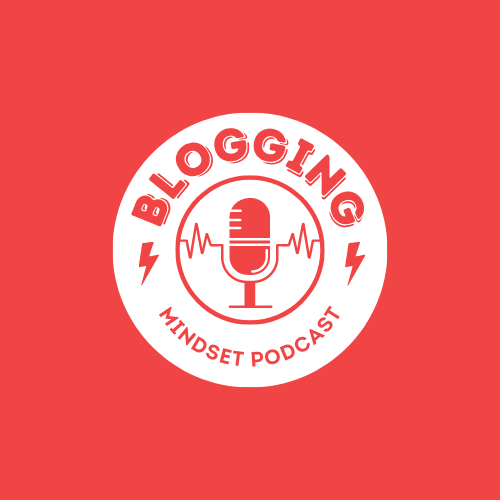Blogging Mindset Podcast Episode 48:
Building a Blogging Brand in a Helpful Content World That Goes Further Than Written Content
Hey! Welcome to another episode of “The Blogging Mindset Podcast”.
I’m your host, Miles, and today we’re delving into the current state of blogging, and why you need to build a blogging brand that goes beyond just writing content.
Whether you’re a seasoned blogger, just starting out, or someone who’s contemplating joining the blogosphere, this will be one of the most important lessons in blogging moving forward.
Why build a blogging brand?
So, let’s start by addressing the big question: What’s the deal with building a blogging brand that goes further than just writing content?
Well, when you think about blogging, what’s the first thing that comes to mind? For many, it’s the written word. It’s the art of crafting informative, entertaining, or thought-provoking articles. But, let me tell you, blogging is so much more than that, especially if you want to succeed in the current Google landscape.
To understand why it’s essential to build a blogging brand that transcends content, let’s break it down into a few key points.
POINT 1: Authenticity
Firstly, authenticity is paramount. Your blog is your digital persona, and authenticity is what will set you apart. It’s not just about the words you write; it’s about the voice you project. People don’t just want information; they want a connection. They want to feel like they know you and can trust you.
So, ask yourself:
- What is it that makes your blog uniquely yours?
- How do you authentically connect with your audience?
Your blogging brand should reflect your values, personality, and the authentic you.
A great example of an authentic blogger is Mr. Money Mustache. He uses lots of custom images, he writes to the readers as if he is talking to them, and his voice is apparent in everything he does.
Outside of blogging, look at YouTubers for examples of authenticity.
POINT 2: Consistency
Secondly, consistency is key. Building a brand means setting expectations. Your readers should know what to expect when they visit your blog. It’s about more than just posting regularly; it’s about maintaining the quality and style that your audience has come to love and trust.
Consistency extends to everything, from the visual elements of your blog to the tone of your writing. It’s about creating a reliable experience that keeps your readers coming back for more.
A great example of a consistent blogger is Nick Loper, from Side Hustle Nation. He has a consistent blog and podcast schedule, and he’s always honed in on his core subject: Side Hustles.
Whenever I think about side hustles, I think about Nick Loper.
Once your audience associates you with your primary subject, you’ll know you’re being consistent.
POINT 3: Community
The third aspect is community. Your blog isn’t just a one-way street where you publish and your readers consume. It’s a two-way conversation.
Building a brand means building a community around your content. Encourage comments, engage with your readers on social media, and create a sense of belonging.
Remember, it’s not just about what you say but how you listen. Your audience can provide valuable insights and ideas, and involving them in your blogging journey can be incredibly rewarding.
A great example of a community-focused blog is Nintendo Life. They are the most visited Nintendo blog in the world, and they have a very active Forum, a blog that regularly incorporates its community, active social media channels, and a massive YouTube channel.
They also have an incredible blend of content including:
- Trends
- News
- Controversies
- And evergreen content such as: 50 Best Wii Games of All Time.
So, what can you take away from Nintendo Life?
- Incorporate your community into your blog
- Diversify your content types
- Find new traffic sources
Which brings us to our next point.
POINT 4: Diversification
Fourth, diversification. Building a blogging brand means expanding beyond just writing. Explore different content formats like videos, podcasts, or old-school infographics. Embrace various social media platforms to reach a broader audience.
If you haven’t expanded beyond written blog content, figure out how you can repurpose that content and promote it even further:
- Republish your content on Medium.com. Simply copy and paste your post into the Medium editor, publish the post, then go into the Advanced SEO settings and paste the original URL from your website.
- Start a Facebook group and Facebook page. Your Facebook page will have the same name as your blog, and you’ll share your blog posts here. Your Facebook group, on the other hand, will be your free community with a name related to your blog niche. You don’t want your group to have the same name as your blog, because you want the group to be optimized for Facebook’s search engine. For example, if you have a blog called “thrift flipping mastery”, you may want to title your Facebook group something like “resellers group for beginners”. You can share articles from your Facebook page into this group, and you can also use the group to collect original data from your audience.
- Create search engine optimized pins on Pinterest. This is especially valuable if you’re in a niche with lots of visual elements. Some example niches are: Design, food, travel, art, beauty, decor, crafting, and DIY. But even if you’re not in any of these niches, I’m sure you can craft some enticing images for Pinterest to attract readers to your blog.
This brings me to an important point:
The most important thing to keep in mind when repurposing and promoting your blog content is the platform’s users.
Ultimately: build your brand in a place where your ideal customers & readers hang out.
And don’t make this hard. You can repurpose your content with just 1 or 2 extra hours of work a week, which can bring in 1000’s of extra visitors to your blog.
This approach helps you reach more people and keeps your brand interesting.
CONCLUSION
In conclusion, building a blogging brand that goes beyond writing content is about being authentic, maintaining consistency, nurturing a community, and diversifying your content.
Remember, blogging is not just about what you say, but how you say it, and the relationship you build with your readers.
If you enjoyed this episode, please subscribe and leave a review for “The Blogging Mindset Podcast”!
Thank you for joining me on this episode, and I hope this has inspired you to take your blogging journey to the next level. And, as always, keep thinking, keep growing, and keep sharing your unique blogging brand with the world.

